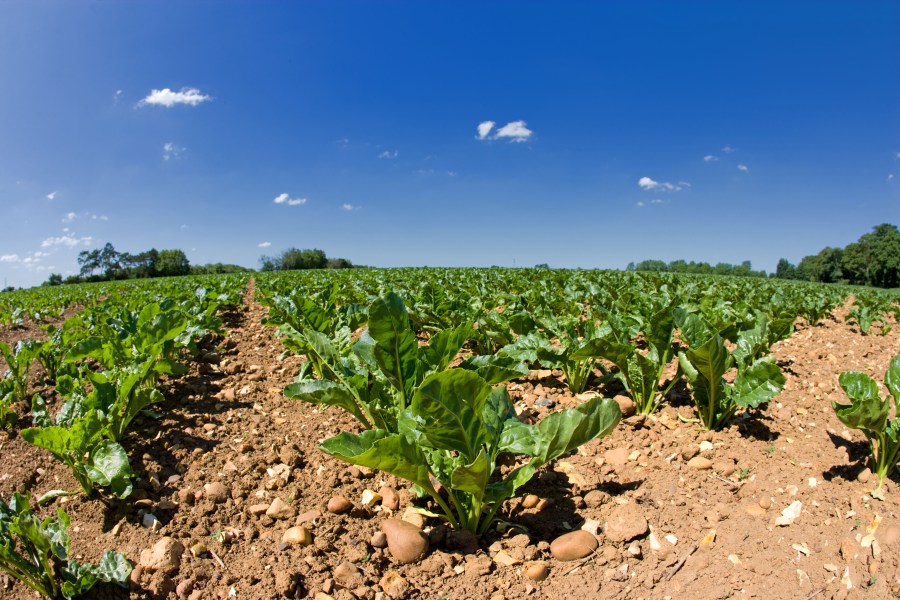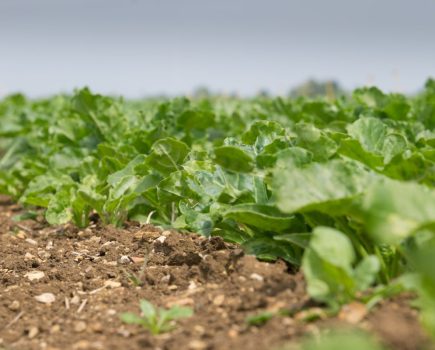Establishing sugar beet well sets the foundations for higher yields and more profitable crops. CPM talks to an award-winning Suffolk grower to see how they achieve average yields well over 90t/ha.
We won’t travel on land if conditions aren’t right.
By Paul Spackman
When it comes to getting the most from sugar beet, Guy Hitchcock and his son William are up there with the best. Hitchcock Farms was a finalist in last year’s inaugural Beet Yield Challenge (BYC) with a yield of 116t/ha, equivalent to 83% of the crop’s biological yield potential.
It was far from a one-off, as the average across more than 80ha grown on their own land near Stowmarket in Suffolk came in at 108t/ha, in what was a good growing season in 2017. Even in the more challenging 2018/19 season, overall yield averaged an impressive 93.5t/ha, with their BYC field coming in at 111t/ha.
The Hitchcocks and their agronomist Alistair Shepherd of Hutchinsons, believe good soil preparation, patience, attention to detail and a willingness to invest are essential ingredients for strong establishment and maximum crop potential.
This is especially true on the heavier clay loam at Hitchcock Farms’ Ringshall, which is not traditional beet-growing land and can be tricky to manage when wet.
“Soil structure is so important for sugar beet; you simply can’t afford to have areas that are waterlogged or compacted,” says Guy. “We’ve invested heavily in land drainage in the last 20 years and are constantly working to improve and protect our soils.”
Sugar beet is very susceptible to compaction, so this is minimised wherever possible throughout the rotation, by keeping trailers to headlands or tramlines at harvest and using tracked machines to spread weight.
“We use a rubber-tracked crawler for all cultivations, which has been our saviour. Wheeled tractors can lead to more compaction; they’re just not an option, especially in spring.”
A good, level seedbed is vital for accurate beet drilling and for even plant stands, which has knock-on benefits for crop management and reducing harvester losses, he says.
Most land going into beet is ploughed in Sept, then worked down with a Simba CultiPress while soil conditions allow a level ‘semi-seedbed’ that will weather over-winter. Fields are sprayed off with glyphosate when conditions allow in March, before a final cultivation with a Väderstad NZA spring-tine cultivator and Crosskill roller.
“We won’t travel on land if conditions aren’t right. Strong establishment is essential, so we must ensure the seedbed is as good as we can get,” adds Guy.
Beet is drilled 25-30mm deep with the farm’s 12-row Monosem precision drill, fitted with GPS RTK guidance and automatic section shut-off to avoid overlaps. Seed is typically sown at 1.2 units/ha, although rates depend on soil conditions.
“We aim to establish 100,000 plants/ha and usually manage this. Some areas established a bit too well last year, with up to 120,000 plants/ha, which is potentially too high.”
The farm has just bought a second Monosem drill, featuring similar specifications but with additional disc openers in front of the coulters.
“Hopefully this will improve establishment where seedbeds are sub-optimal and help sow seed into moisture when soils are dry,” says Guy.
Having a second drill also means all land can be sown within a narrow timeframe when conditions are suitable. “Our key window is the last week of March to the first week of April. It makes it a lot easier to manage crops through the season if they’re all around the same growth stage,” adds Alistair.
Autumn-applied poultry litter from nearby chicken units and Fibrophos fertiliser provide the main source of phosphate, potash and trace elements.
A base application of liquid nitrogen is also applied to ploughed land before the first spring cultivation, followed by the remaining N at the 2-4 true leaf stage.
The faster crops establish, the more manganese they need, comments Alistair, so this is monitored closely and a top-up is applied as soon as canopy growth is sufficient. If needed, a blanket application of LimeX is also applied every four years in the autumn to maintain a relatively high soil pH.
The ban on neonicotinoid seed treatment and associated increase in aphid-borne virus yellows risk poses one of the most immediate threats to yield, but the Hitchcocks are confident this will be overcome long-term.
“There will be some chemical [insecticide] options available, but they’re not as effective as neonics and pose a risk to beneficial insects too,” says William.
“Crops are most vulnerable to infection between emergence and 12-leaves, so our main approach will be to get them established and past this stage as quickly as possible.”
Focusing on all ways of maximising establishment and having two drills to get crops in at the optimum time should help achieve this, he says.
“I’m also very confident in the work breeders are doing to build resistance into future varieties,” he adds.
The farm takes a robust stance against all weeds, focusing on two or three post-emergence applications of products based on phenmedipham, desmedipham, and ethofumesate with a residual partner.
“We want to maintain clean crops right the way through,” notes Alistair. That applies to disease control too, where a two-spray fungicide strategy is favoured to protect canopy health and maintain green leaf throughout the growing period.
“Depending on disease pressure, we may bolster the second fungicide with extra cercospora protection, especially in later-lifted crops. Sugar beet is an exacting crop to grow well, so careful consideration and attention to detail is needed at every stage, from soil preparation right through to harvest and haulage.”
Fact facts
Hitchcock Farms, Ringshall
- Farm size: 700ha of owned, rented, contract-farmed land.
- Soil type: ranges from sandy clay loam, to silty clay loam, and clay loam.
- Cropping: includes winter wheat, oilseed rape, sugar beet, spring barley, winter beans.
- Sugar beet: 150ha (increased from 80ha traditionally grown) plus 1100ha of contract harvesting and 600ha of contract drilling.
- Average Yield: 2018/19 –93.5t/ha; 2017/18 – 108t/ha
- Mainline tractors: John Deere 8370RT tracked tractor, JD6210R, JD6155R, JD6430P x2
- Sugar beet drills: 12-row Monosem x2
- Harvester: Holmer T4-30
- Sprayer: Knight 5000-litre 36m trailed
- Cultivation: 7f fully-mounted plough, Simba CultiPress, Väderstad NZA cultivator and Crosskill roller.




